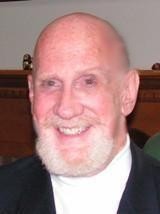“Conservatives” Are Single-Largest
Ideological Group
by Staff - June 15th, 2009 - Gallup
Thus far in 2009, 40% of Americans interviewed in national Gallup Poll surveys describe their political views as conservative, 35% as moderate, and 21% as liberal. This represents a slight increase for conservatism in the U.S. since 2008, returning it to a level last seen in 2004. The 21% calling themselves liberal is in line with findings throughout this decade, but is up from the 1990s.
These results are interesting when put side by side by with some other data that is related to this self assessment conducted by Gallup.
The Main Stream Media - by 3 to 1 in their articles - constantly and virulently criticizes conservatives and Republicans. This negative stereotyping creates a bias against these two groups that reduces the willingness of many to acknowledge their true feelings, even in anonymous polls such as these. They call themselves moderates when they are conservatives, so it is likely that conservatives constitute a greater percentage than the poll indicates. The question is, how much does it change the results?
Simultaneously, there is a large bias among many liberals and progressives to dispute they agree with totalitarian oriented philosophies associated with liberals which are in conflict with America's natural tendency towards freedom. People claim to be moderates when they are really liberal or very liberal. This is known by the constant complaint of liberals about conservative stereotyping. Thus moderates are over represented and liberals underrepresented. The question is, how much does it change the results?

I would love to see a more detailed breakdown of the "moderate" data. How many of the group called "moderates" actually lean liberal or lean conservative? In my personal discussions with people who claim to be moderate, it appears biased towards liberal. I believe this is mostly due to the fear of stereotyping by conservatives of the liberal propensity towards totalitarian excesses which I noted above. However the press' negative attacks on conservatives is a factor that could outweigh this.
It would be interesting to see if these propensities could be successfully exposed by the wording of questions so that more accurate results could be obtained.
My final frustration with these polls is the result indicated by the number of self-identified conservatives and moderates who are registered as Democrats. I believe three factors lead to this result.
One is the huge number of local governments in America which are dominated by one-party-rule, almost always Democrats. You thus have to register as Democrat to vote in the Democrat primaries.
The second is the traditional bias against Republicans in the South. People whose parents and grandparents were Democrats because they were racist, continue to vote Democrat even though the party is ruled by people they are totally against philosophically. They are not racist any longer, but neither are they in alignment with liberal control of the party. These conservatives who stay in the Democrat Party are essentially voluntarily reducing their own ability to elect people who they agree with by staying in a party that they do not and cannot influence.
The third factor is the number of people who are fiscally conservative but socially liberal who simply will not align themselves with Republicans due to the intolerance of social conservatives on key social issues.
Democrats benefit from these three factors and are unlikely to lose this political advantage any time soon.
Reading these poll results leads to a better understanding of why we have reached a point where we are a fifty-fifty nation. It also explains why neither party is able to appeal just to its base and stay in office for long. The whole issue of conservative versus liberal is complex and not easily understood.


0 Comments:
Post a Comment
<< Home